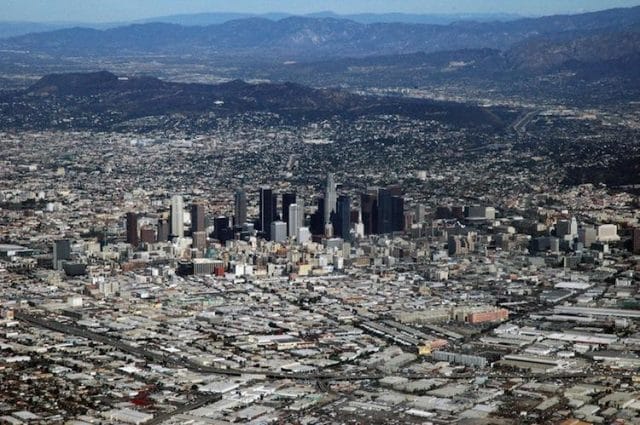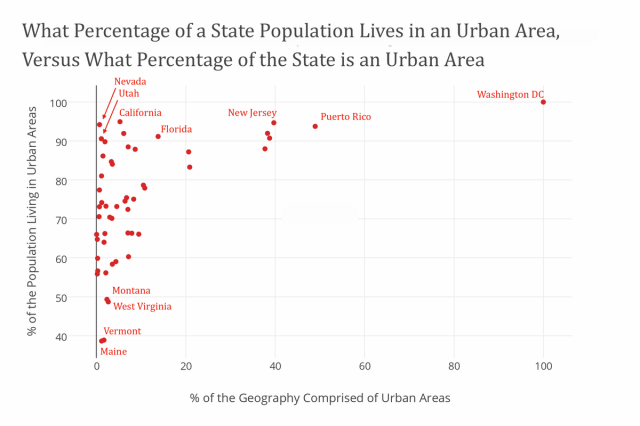
Los Angeles, California: the densest city in America, in the state with the most urban population
The US Census defines urban areas as “densely developed residential, commercial and other nonresidential areas.” This includes major cities and their surrounding suburbs, and it also includes well-developed clusters independent of cities. Overall, 80.7% percent of Americans live in urban areas, but that number varies widely from state to state, and not quite as you might expect.

The 50 states and Puerto Rico ranked by the percentage of residents who live in urban areas. Rosie Cima, Priceonomics; Source: Census 2010
You might expect the smallest states to be the most urbanized, because cities take up a larger percentage of their geographic territory — there’s just less space for non-urban residents. But, according to the 2010 census, some of the largest states – California, Texas, Nevada – have the highest percentages of non-rural residents. In fact, California, for all it’s farmland and tiny mountain towns, has the lowest percentage of rural residents of any state. 95% of Californian live in a Census-classified urban area. Urban areas comprise only 5.28% of the state — which means that almost all of California’s residents are packed into less than 6% of the geography. New Jersey has the second highest percentage of residents living in urban areas, at 94.7% of the state’s population, but a whopping 60.3% of the state qualifies as urban area.

Some heavily urbanized states have a lot of rural land but almost no rural population. Rosie Cima, Priceonomics, Data: Census 2010
From this data it shouldn’t be surprising that 7 of the 10 most densely populated urbanized areas are in California. The most densely populated is the Los Angeles-Long beach-Anaheim area at almost 7,000 people per square mile.
On the other end, there are still several states with rural majorities: Maine, Vermont, West Virginia, and Mississippi. More than half of residents of these states live in non-urbanized areas.
This post was written by Rosie Cima; you can follow her on Twitter here. To get occasional notifications when we write blog posts, please sign up for our email list



